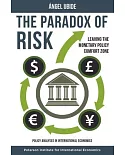The current approach to resolving sovereign debt crises does not work: sovereign debt restructurings come too late and do too little. Though they impose enormous costs on societies, these
restructurings are often not deep enough to provide the conditions for economic recovery (as illustrated by the Greek debt restructuring of 2012. And if the debtor decides not to accept the
terms demanded by the creditors, finalizing a restructuring can be slowed by legal challenges (as evidenced in Argentina).
A fresh start for distressed debtors is a basic principle of a well-functioning market economy, yet there is no international bankruptcy framework for sovereign debts. While this problem is
not new, the United Nations and the global community are now willing to do something about it. Providing guidance for those who intend to take up reform, this book assesses the relative
merits of various debt-restructuring proposals, especially in relation to the main deficiencies of the current nonsystem. With contributions by leading academics and practitioners, the volume
reflects the overwhelming consensus among specialists on the need to find workable solutions.





















